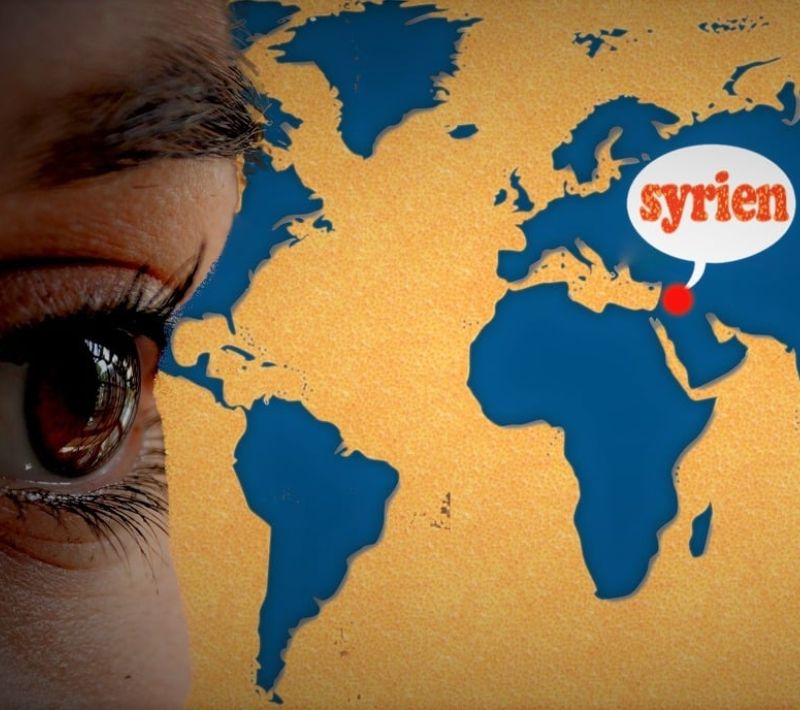The Syrian Civil War and Its Effect on the Country’s Women and Girls

History of the Syrian War: How Did the Syrian Civil War Start?
The Syrian war dates back to March 2011, when popular discontent with President Bashar al-Assad’s Ba’athist government led to large-scale protests and pro-democracy rallies across Syria, as part of the wider Arab Spring protests in the region.
Numerous protests were violently suppressed by security forces in deadly crackdowns ordered by Assad, resulting in tens of thousands of deaths and detentions, many of whom were civilians. The Syrian revolution transformed into an insurgency with the formation of resistance militias across the country, developing into a full civil war by 2012.
Due to government and rebel offensives, as well as sectarian and Islamist bloodshed, the war’s level of violence peaked between 2012 and 2017. Nearly all parties involved, including the US-led coalition, Iran, Russia, Turkey, the Assad regime, the Islamic State, and opposition groups, have been charged by international organisations with grave human rights abuses and killings.
Millions of people fled to neighbouring countries like Turkey, Lebanon, and Jordan as a result of the violence, but a significant minority also sought safety outside of the Middle East, with Germany alone taking in more than half a million Syrians since 2011. Fighting has persisted despite the beginning of several peace initiatives since 2011, such as the United Nations-led Geneva peace negotiations on Syria in March 2017.
Current Update on the War
Through domestic repression, torture, and murder, Assad managed to hold onto power even using a combination of chemical weapons and lethal support from Russia and Iran to put down an uprising in 2011. His family’s dynasty, which started in 1971, appears to be ended now.
The atrocities of Syria’s bloody civil war seemed to go on forever for the majority of its 13 years, but on December 8, 2024, President Bashar al-Assad’s regime fell, with the despot escaping his nation after a ten-day spectacular advance by rebel forces.
The rule of the country has been taken over by a De-facto leader, Ahmed al-Sharaa since the transitional government was established.
The Effect of The Syrian Civil War on Women and Girls
Syria’s essential service capacity is still declining thirteen years after the crisis began in 2011. The situation is still one of the most complicated humanitarian and protection crises in the world, notwithstanding the ongoing efforts of humanitarian participants. In 2024, there were 16.7 million people in need of humanitarian aid, the most since 2011.
According to the United Nations Human Rights, women’s and girls’ most fundamental rights, including the right to food and health, have been impacted by the violence. Nearly 6 million Syrians, 74% of whom are women and girls, are in critical need of nutritional support.
Approximately 4.1 million of the 8 million women and girls in this group are of reproductive age. Nearly half of the more than 6.3 million Syrian refugees who are still living in five neighbouring countries—Turkey, Lebanon, Jordan, Iraq, and Egypt—are women and children, who are increasingly at risk of exploitation, abuse, and lack of access to basic services.
In many places, systematic attacks on medical facilities during the conflict have limited women’s and girls’ access to reproductive health care services. Nearly 60% of Syria’s hospitals had been destroyed or damaged as early as 2015, according to a WHO report, and over half of the nation’s medical personnel had either fled or been killed.
Gender-based violence persists in the everyday lives of the women and girls affected by the crisis, which is in addition to the fact that many of them do not have access to adequate sexual and reproductive health services.
These circumstances sustain a detrimental atmosphere in which women’s and girls’ health and well-being are continuously threatened, resulting in their devaluation, exploitation, and subsequent victimisation.
In particular, teenage girls face several challenges that often follow them for the rest of their lives. Domestic violence and limited freedom of movement are common beginning points for these problems, which then develop into problems like child and forced marriages, ongoing domestic abuse, early pregnancies, sexual violence, and exploitation.
Additionally, denying children access to school lowers their chances for the future and may trap them in a never-ending cycle of exploitation and abuse.
Things haven’t been any easier for the older women. Although enforced disappearances have affected both men and women in Syria, men and boys make up the great bulk of individuals who have vanished. Tens of thousands of women around Syria are consequently still looking for their husbands who have vanished or been forcibly removed, mostly by government forces.
Female heads of households and other women and girls who have been displaced by violence for an extended period, frequently in camps, endure extraordinary hardships. Many of them are subjected to different forms of harassment and discrimination because of their marital status and gender. Cultural stereotyping and prejudice against widows may result in particular limitations on the human rights of displaced widows in northwest Syria, including the freedom of movement.
International human rights organisations have determined in recent years that some laws and practices that have a detrimental effect on women and girls in Syria are discriminatory and violate Syria’s duties under human rights treaties. The Government of Syria has so far mostly failed to enact the beneficial policies and legislative reforms suggested by the Committee on the Elimination of Discrimination Against Women (CEDAW) and other international human rights organisations, notwithstanding some minor advancements in certain sectors.
Before the conflict, women and girls were already at a disadvantage due to pre-existing discriminatory laws and practices, which were frequently reinforced by cultural norms in society.
These included, for instance, protection from violence, equality before the law, equitable inheritance distribution, access to housing and property, the right to family and child custody, the granting of nationality to children, and occasionally freedom of movement.
Since rape can be considered torture, the UN Committee against Torture, like CEDAW, has called on Syria to change its laws against various types of violence that primarily affect women to comply with the Convention Against Torture. Examples of these changes include making domestic abuse and marital rape crimes. Despite the Government of Syria’s pledges, these suggestions are still mainly unexecuted.
It is particularly difficult for survivors to obtain justice because of the almost total lack of victim protection services, like shelters, as well as stigmatisation and discrimination against them.
Syrian women and men have made tremendous efforts in the last ten years to improve the protection and empowerment of women and girls. Many civil society and women’s rights organisations in Syria are working to increase awareness of issues including gender equality, nondiscrimination, and women’s human rights.
However, this is insufficient on its own. Through a wide range of additional strategies and actions, the de-facto leader and other authorities in various parts of the country must take the initiative to fulfil their international obligations to end discrimination against women and girls, protect them from all forms of gender-based violence, give them equal opportunities to earn a living and encourage their full participation in public life.
Dr. Anita is a medical doctor with a passion for writing. She explores a variety of topics on Afrolady, from health and wellness to relationships and lifestyle. With a knack for breaking down complex ideas, she keeps readers informed, entertained, and inspired.

